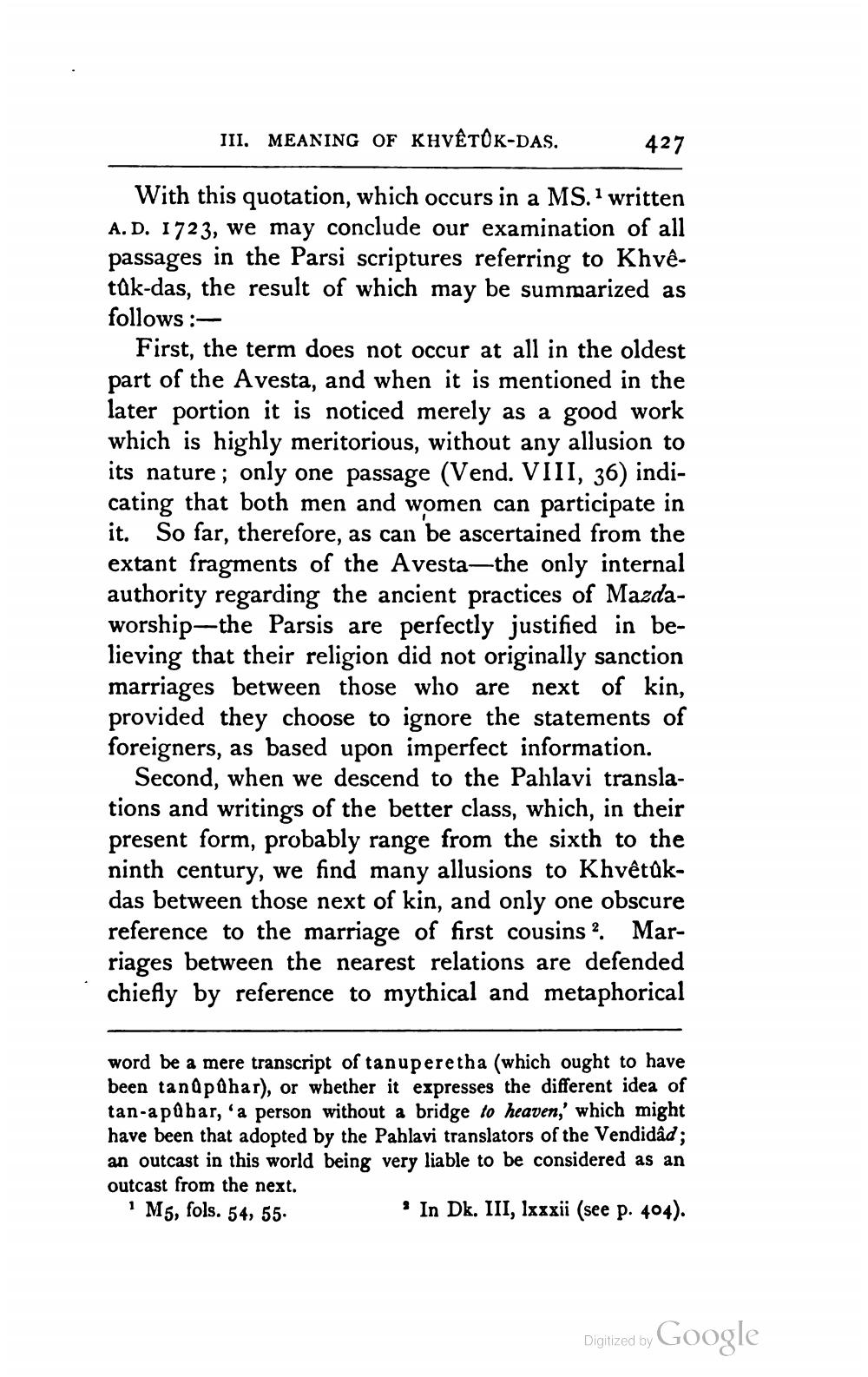________________
III. MEANING OF KHVÊTOK-DAS.
427
With this quotation, which occurs in a MS. 1 written A.D. 1723, we may conclude our examination of all passages in the Parsi scriptures referring to Khvêtûk-das, the result of which may be summarized as follows:
First, the term does not occur at all in the oldest part of the Avesta, and when it is mentioned in the later portion it is noticed merely as a good work which is highly meritorious, without any allusion to its nature; only one passage (Vend. VIII, 36) indicating that both men and women can participate in it. So far, therefore, as can be ascertained from the extant fragments of the Avesta—the only internal authority regarding the ancient practices of Mazdaworship-the Parsis are perfectly justified in believing that their religion did not originally sanction marriages between those who are next of kin, provided they choose to ignore the statements of foreigners, as based upon imperfect information.
Second, when we descend to the Pahlavi translations and writings of the better class, which, in their present form, probably range from the sixth to the ninth century, we find many allusions to Khvêtukdas between those next of kin, and only one obscure reference to the marriage of first cousins ? Marriages between the nearest relations are defended chiefly by reference to mythical and metaphorical
word be a mere transcript of tanuperetha (which ought to have been tanpahar), or whether it expresses the different idea of tan-a pühar, 'a person without a bridge to heaven,' which might have been that adopted by the Pahlavi translators of the Vendidad; an outcast in this world being very liable to be considered as an outcast from the next. 1 M5, fols. 54, 55.
In Dk. III, lxxxii (see p. 404).
Digitized by Google




